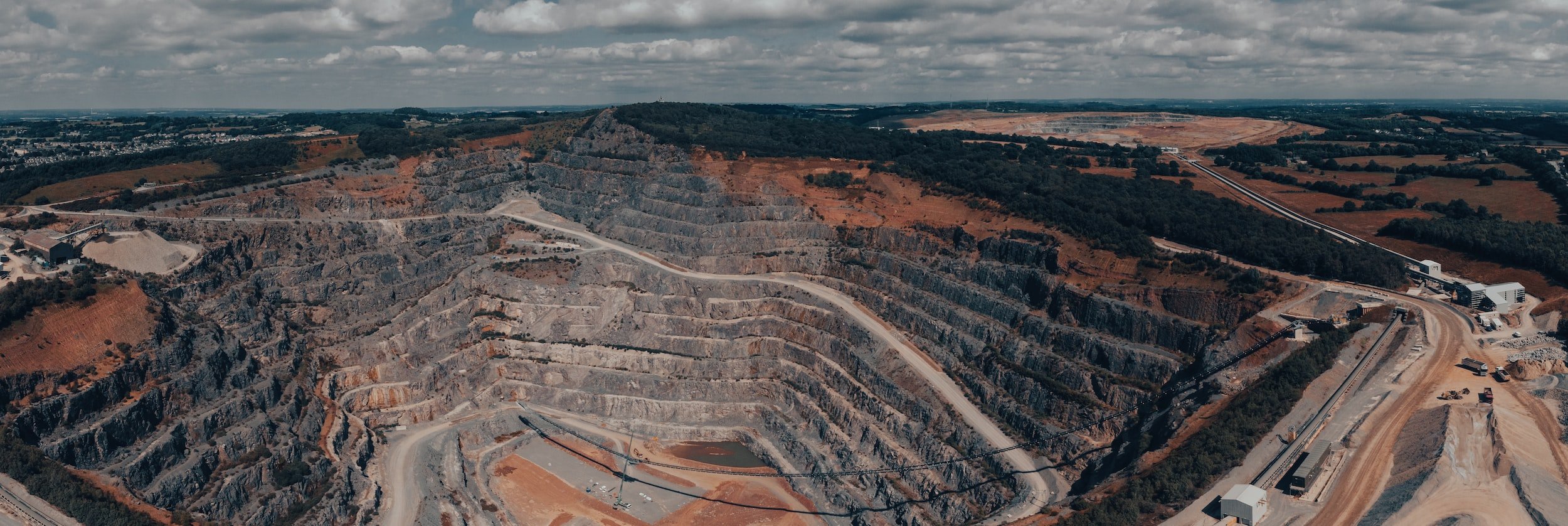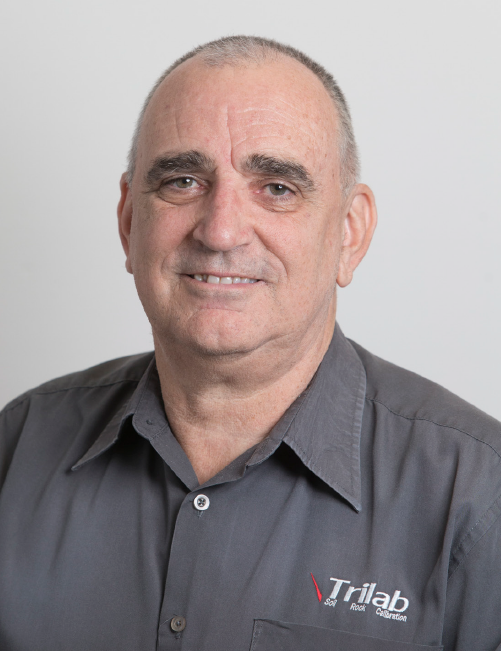
Friction: Edition 15 | March 2024
As geotechnical professionals, we are responsible for providing accurate advice about mine design and operations, and laboratory testing is one of the avenues that enables us to do just that.
In this month’s edition, we dig deep into the importance of geotechnical lab testing within the mining, resources and construction industries.
Q&A with Colin Purvis
Like a geologist chipping away at rock, let's unearth the hidden layers of Colin Purvis, Technical Manager at Trilab, by asking all the important questions.
From how he got his start in the industry to hearing what trends he believes will become more important in coming years’, Colin shares some profound insight into laboratory testing and the importance of geotechnical assessment.
Laboratory Testing of Rock Properties: Challenges and Opportunities
When it comes to geotechnical investigation and design, laboratory testing plays a fundamental role in ensuring the success of any project. However, like any industry, when you take a look under the microscope there are usually more than one challenge that need to be addressed.
In this article, Zhongwei Chen, Associate Professor for the School of Mechanical & Mining Engineering, at The University of Queensland, investigates the challenges such as sample availability and preparation, which hinder laboratory testing and how addressing such challenges can provide long term benefit for Australia’s mineral and resources sector well into the future.
Friction: Edition 14 | February 2024
Welcome to the first edition of 2024. New year, same excellence in geotechnical news and information from across the globe.
This month, we dive deep into data acquisition and data management. From the technological advancements that affect the industry to the rising importance of sufficient data management, this edition provides valuable insight into why data and mining go hand-in-hand.
Garbage in, garbage out. The importance of data acquisition and data management
At its core, geotechnical engineering is nothing without accurate and complete Data Acquisition and Data Management.
In this article, Jed Watts, Client Relationship Manager at Datanest - software that enables the geotechnical industry to improve efficiency and accuracy – looks at the pivotal role data plays in ensuring not only the technical success of a project but also the efficiency and cost-effectiveness of the entire process.
From optional to essential: the changing landscape of quality control in geo data collection
As industry adopted data sharing standards become more complex, the need to understand quality control around geo data collection is as crucial as ever.
In his article, Declan Vanderhor from TabLogs looks at the changing landscape of data and how organisations can leverage their own internal databases to scale for efficiency and effective outcomes.
The rise of ESG and how it relates to geotechnical engineering
If there was ever a corporate buzz word, ESG would have to be it in recent times. ESG is impacting nearly every organisation in the world. If you haven’t felt that impact yet, you will. There is a tsunami of new ESG disclosure requirements on the way, and that means visibility, questions and information requests under many more rocks of businesses.
ESG and sustainability: On whose watch?
Sustainability is the word on everyone’s lips today and for good reason: The effects of climate change have accelerated faster than even the experts had predicted, faster than evolution can keep up with.
Friction: Edition 13 | November 2023
As we prepare to round out the year that was with our November edition of Friction, we dive deep into Environmental and Social Governance (ESG) and the role it plays in the mining industry.
ESG is on everyone’s minds, and for good reason, with every sector’s ESG policies and approach to sustainability in the spotlight. The mining and geotechnical engineering industry is no different.
Friction: Edition 12 | October 2023
How the mining industry monitors tailings dams has evolved over the years with advancements in technology, AI and research and development.
In this month’s edition, we dive deep into the complex structures that are tailings dams and how the future need for development, training and upskilling must not be ignored.
Developing new framework to achieve better tailings dams’ governance and management
Ensuring current guidelines for tailings dams are implemented and conformed to by clients is an important undertaking. In this article we hear from principal geotechnical engineer Keith Mandisodza at Cartledge Mining and Geotechnics on why developing new frameworks is essential to achieving better governance and management
The evolution of monitoring tailings dams across the globe
How the mining industry monitors tailings dams has evolved over the years with advancements in technology, AI and research and development. In this article, GroundProbe’s Paul Davies discusses the approach to preventing tailings dam disasters with expert, Leo Probst. Here, they reflect on the past catastrophic tailings dams events and how new advancements in technology can ensure optimal safety and reduced risk for both miners and communities.
Q&A with Adam Beer
Everyone has a story to tell, and this month we asked Adam Beer, Principal Geotechnical Engineer, AMC Consultants, the hard questions.
Friction: Edition 11 | September 2023
In this month’s edition we look at the future generation of geotechnical engineers. From addressing the skill-shortages that face the industry to improving the image and attraction of mining, we hear personally from senior geotechnical engineers within the education system to understand what this looks like and why it’s a fundamental focus.
Tertiary terra firma: How universities can support the next generation of geotechnical engineers
The next generation of geotechnical engineers globally is facing a raft of challenges – with training, competency requirements and regulations across regions, as well as emerging technologies, all at the top of that list.
Q&A with Ismet Canbulat
Everyone has a story to tell, and this month we asked Professor Ismet Canbulat, Head of School and Chair of Rock Mechanics at UNSW, the hard questions.
Friction: Edition 10 | August 2023
In this months edition, we hear how Slope Stability Radars are used, the changes they are making throughout our industry and the importance of conducting a dam breach analysis and what happens when they go wrong.
On the consequences of getting dam breach analysis wrong
Geotech risk management: why it pays to build it into your mine design from the outset
Sound geotechnical analysis can have myriad positive effects on mine design, planning and productivity and the earlier geotechnical teams are introduced to the design process, the greater the benefit.
Why we use Slope Stability Radars and how it’s changing.
Geotech risk management: why it pays to build it into your mine desiIn recent years, there has been a growth in the use of slope stability radars in open cut mines. Although the primary reason has always been operator safety, a secondary benefit to improvements to mine productivity has justified increasing their usage. In this article, GroundProbe’s Paul Davies shares the results of a survey of geotechnical engineers conducted in July 2023.
Friction: Edition 9 | July 2023
Geotechnical risk management is an important part of engineering. In this edition we look at why it should be built into your mine design from the beginning.




















